Related Research Articles
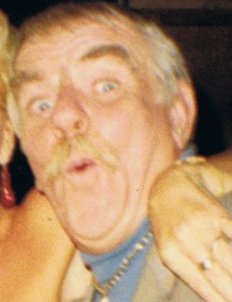
Windsor Davies was a British actor. He is best remembered for playing Battery Sergeant Major Williams in the sitcom It Ain't Half Hot Mum (1974–1981) over its entire run. The show's popularity resulted in Davies and his co-star Don Estelle achieving a UK number-one hit with a version of "Whispering Grass" in 1975. He later starred with Donald Sinden in Never the Twain (1981–1991), and his deep Welsh-accented voice was heard extensively in advertising voice-overs.

Barry John was a Welsh rugby union fly-half who played in the 1960s and early 1970s during the amateur era of the sport. John began his rugby career as a schoolboy playing for his local team Cefneithin RFC before switching to the first-class west Wales team Llanelli RFC in 1964. Whilst at Llanelli, John was selected for the Wales national team—as a replacement for David Watkins—to face a touring Australian team.

Sir Gareth Owen Edwards CBE is a Welsh former rugby union player who played scrum-half and has been described by the BBC as "arguably the greatest player ever to don a Welsh jersey".

The Wales national rugby union team represents the Welsh Rugby Union in men's international rugby union. Its governing body, the Welsh Rugby Union (WRU), was established in 1881, the same year that Wales played their first international against England. The team plays its home matches at the Millennium Stadium in Cardiff, which replaced Cardiff Arms Park as the national stadium of Wales in 1999.

The Wales national rugby league team represents Wales in representative rugby league football matches. Currently the team is ranked 17th in the IRL World Rankings. The team was run under the auspices of the Rugby Football League, but an independent body, Wales Rugby League, now runs the team from Cardiff. Six Welsh players have been entered into the Rugby League Hall Of Fame.

Cardiff Rugby Football Club is a rugby union club based in Cardiff, the capital city of Wales. The club was founded in 1876 and played their first few matches at Sophia Gardens, shortly after which relocating to Cardiff Arms Park where they have been based ever since.
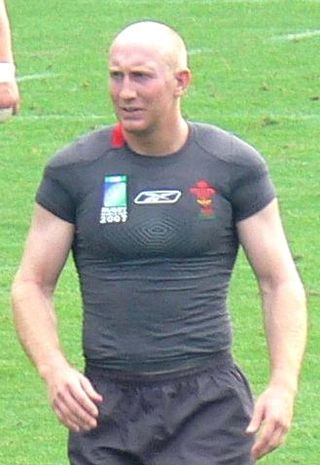
Tomos George Llewellyn Shanklin is a former Welsh rugby union player who played outside centre for Cardiff Blues and Wales. He played club rugby for London Welsh and then Saracens, before joining Cardiff Blues in 2003.
In 1971 the British Lions toured New Zealand, also playing two matches in Australia. Despite losing the first match to Queensland the tour was a great success, the Lions winning the Test series against the All Blacks. They are still the only Lions side to have won a Test series in New Zealand. The side was captained by John Dawes, coached by Carwyn James and managed by Doug Smith.

Rhys Thomas "Rusty" Gabe born as Rees Thomas Gape, was a Welsh rugby union player who played club rugby for Llanelli, London Welsh and Cardiff and gained 24 caps for Wales, mainly as a centre.

Maurice Joseph Lawson Turnbull was a Welsh cricketer who played in nine Test matches for the England cricket team between 1930 and 1936.
Alexander John "Grizz" Wyllie is a New Zealand rugby union former player and coach.
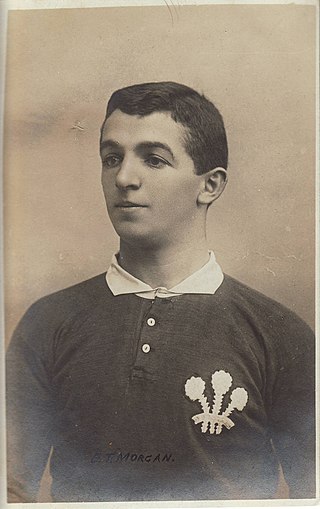
Edward Morgan was a Welsh international rugby union player. He was a member of the victorious Wales team who beat the 1905 touring All Blacks in the famous Match of the Century and is remembered for scoring the game's winning try. He played club rugby for London Welsh and Swansea.
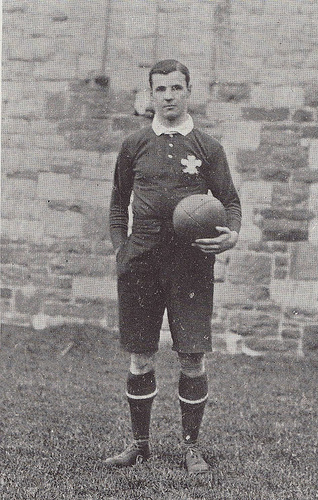
William Morris Llewellyn was a Welsh international rugby union player. He captained Wales in 1905 and London Welsh in 1902. He was a member of the winning Welsh team who beat the 1905 touring All Blacks in the famous Match of the Century. Llewellyn toured with the British Isles to Australasia in 1904 and won three Triple Crown trophies. He played club rugby for many teams, predominantly for Llwynypia and Newport.
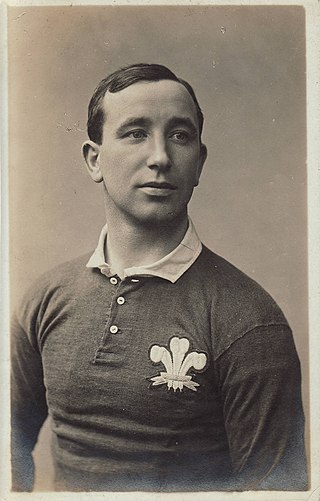
Richard Hughes Jones was a Welsh international fly-half who played club rugby for Swansea Rugby Club. He won 15 caps for Wales and played county rugby for Glamorgan.
Terence John Davies MBE was a Welsh international full back who played club rugby for Swansea and Llanelli. He won 21 caps for Wales and was selected to play in the British Lions on the 1959 tour of Australia and New Zealand. Davies was seen as the last of the great Welsh full backs, before the 'No direct kicking into touch' rule was introduced in the late sixties and changed the full back role.
The 1876 association football match between the national teams representing Scotland and Wales took place on 25 March 1876 at Hamilton Crescent, Partick, the home ground of the West of Scotland Cricket Club. The match was the first game ever played by the Welsh side. It was also the first time than Scotland had played against a team other than England.
The 1988 Wales rugby union tour of New Zealand was a series of rugby union games undertaken by the Wales national rugby union team to New Zealand. The tour consisted of six matches against regional teams and two Tests against New Zealand.
Rugby union has a long history in Wales. Today it holds tier one status with the IRB. However, compared to Scotland, England, and Ireland, it was a latecomer on the international scene, and was not initially successful. Rugby union is the national sport of Wales, and is a great influence on Welsh culture.
The 1993 New Zealand rugby league tour of Great Britain and France was a tour by the New Zealand national rugby league team. The New Zealand national rugby league team lost a series 0-3 against Great Britain but defeated Wales and France in one-off test matches. They also won games against Wigan, St Helens, Widnes, Leeds and the Great Britain under 23's.
References
- ↑ This fictional incident is probably inspired by the real-life incident in the first ever test match between New Zealand and Wales, played in 1905. Wales won the game 5-3 after a "try" scored by Bob Deans was disallowed by the referee who had failed to keep up with play and was 40 yards from the action. The result was a bone of contention between Welsh and New Zealand fans for decades afterwards
- ↑ Martin & Edwards (1997), p. 155.
- ↑ Mitre 10 advertisement on YouTube